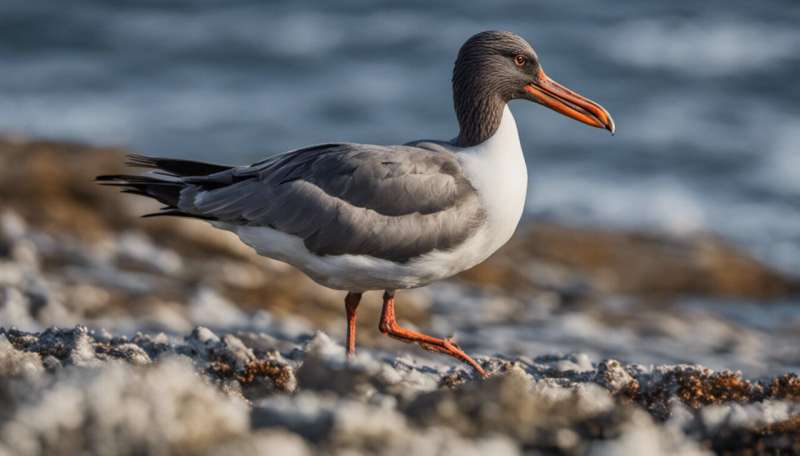Live tracking of vulnerable South Atlantic seabirds

(Phys.org)—Real-time information showing the locations of the threatened frigatebird is now available online thanks to a new Darwin Initiative funded study led by the University of Exeter and Ascension Island Government Conservation Department.
Researchers fitted satellite transmitters to several wild frigatebirds on Ascension Island and the live map of locations is now freely available to view online at www.seaturtle.org/tracking/ascension.
The study is part of a larger project to compile a Biodiversity Action Plan for Ascension Island. It will highlight areas used by frigatebirds, a relative of the pelican, and show where they may need protection.
The study, which uses tiny satellite transmitters - weighing less than a packet of crisps - mounted to the feathers with tape, is being carried out in collaboration with the RSPB and the University of Lund, Sweden. The data have already shown that the birds fly several hundred kilometres from Ascension Island in search of food. One of the birds has recently returned from a foraging trip of over 3800km which it covered in just 12 days.
Dr Annette Broderick from the University of Exeter said: "Virtually nothing is known about the way that Ascension Island frigatebirds use their habitat when out at sea. These data are already showing where they go, how far they travel and for how long they stay away from the island. It is a crucial component to an action plan that will be put in place to protect the unique flora and fauna of Ascension Island."
The frigatebird (Fregata aquila) is endemic to Ascension Island, a UK Overseas Territory in the South Atlantic ocean. The species is classified as Vulnerable on the IUCN Red List* as it only breeds on one small island where invasion by feral cats is a concern. Frigatebirds are primarily fish eaters and commercial fishing in the area could present an additional threat.
Dr Nicola Weber from Ascension Island Government Conservation Department said: "The Ascension Island frigatebird is one of Ascension's most iconic species and a priority for local and international conservation actions. This project has created a great deal of excitement on the Island and builds on the symbolic return of the frigatebirds to the mainland earlier this year. Children from Two Boats School have named the birds, Josephine, Napoleon and Nellie and have been following their tracks closely on the internet in near real-time."
Clare Stringer Head of UK Overseas Territories Unit at the RSPB said: "A single egg is laid in the breeding season but it takes so long to raise a chick that frigatebirds cannot breed every year. With such limited nest sites, and so few chicks, it is crucial that nesting sites and foraging areas are protected. It is estimated that 90% of the UK's biodiversity is found within its Overseas Territories. The UK has a responsibility to carry out effective conservation in the Overseas Territories to protect biodiversity in these regions."
Frigatebirds are large with iridescent black feathers and long wings. Males have dramatic inflatable red-coloured throat pouches called gular pouches which they inflate to attract females during the mating season.
More information: www.seaturtle.org/tracking/?project_id=809
Provided by University of Exeter



















